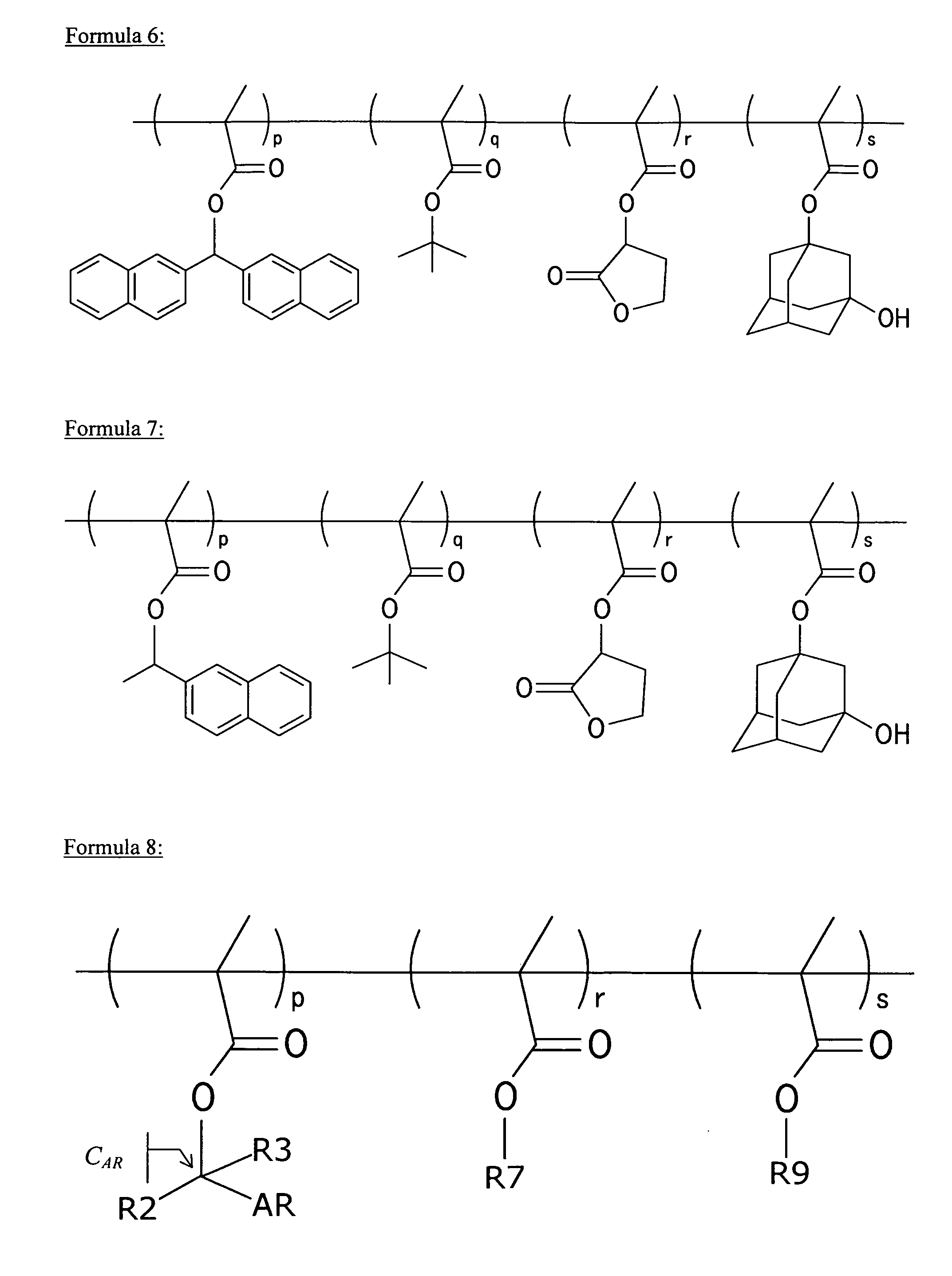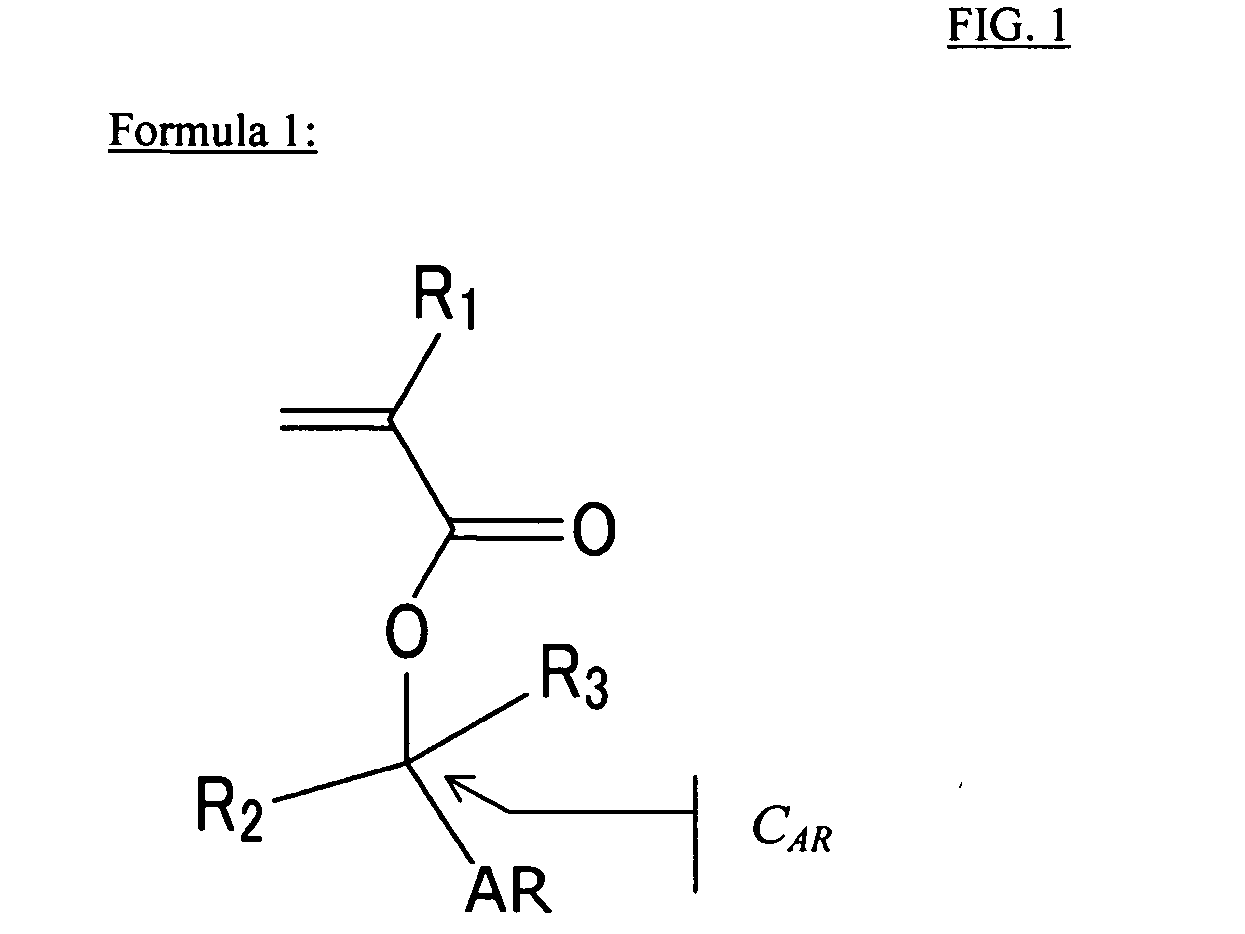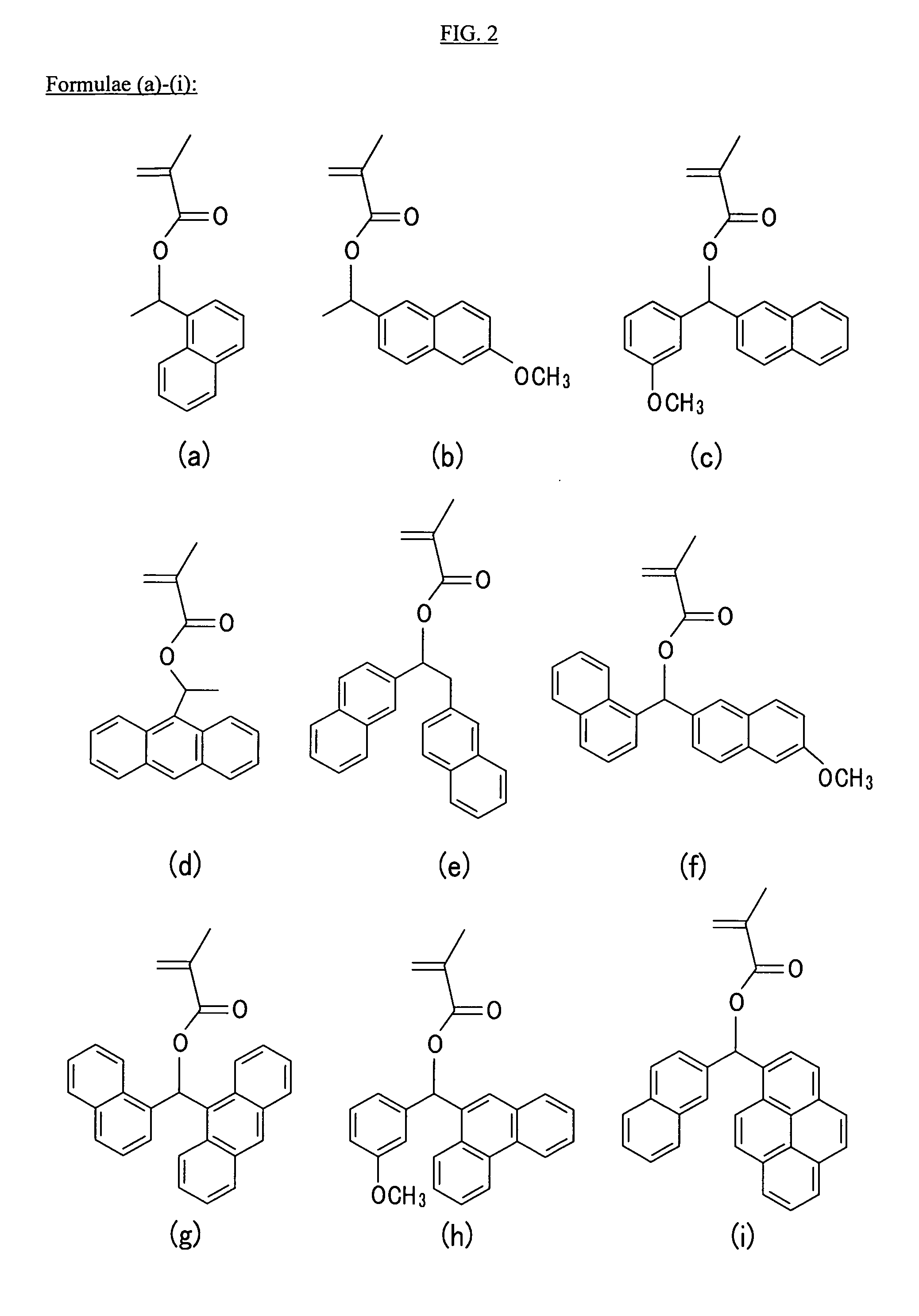(Meth)acrylate compound having aromatic acid labile group, photosensitive polymer, resist composition, and associated methods
a technology of aromatic acid labile group and acrylate compound, which is applied in the direction of photosensitive materials, instruments, photomechanical apparatus, etc., can solve the problem of dry etching resistance of photosensitive resin
- Summary
- Abstract
- Description
- Claims
- Application Information
AI Technical Summary
Benefits of technology
Problems solved by technology
Method used
Image
Examples
example 1-1
Synthesis of bis(2-naphthyl)methyl Methacrylate Monomer
[0084]
[0085]Using the method shown in Reaction Scheme 1, a bis(2-naphthyl)methyl methacrylate monomer was synthesized as follows:
[0086]3.5 g of ethyl formate was dissolved in 50 mL of THF in a round bottom flask, and 200 mL of a 2-naphthyl magnesium bromide solution (0.5 M in THF) was slowly added in a dropwise fashion. The resulting mixture was reacted at about 40° C. for about 2 hours. After the reaction, the obtained reactant was dropped in an extreme amount of water and then, neutralized with thin hydrochloric acid. The resulting product was extracted with diethyl ether. The extract was purified through column chromatography using hexane and methylene chloride mixed in a ratio of 2:1.
[0087]14 g of the acquired product and 5 g of TEA (triethylamine) were dissolved in 200 mL of THF, and 6 g of methacryloyl chloride was slowly added in a dropwise fashion. The mixture was reacted at a room temperature for 4 hours. After the reac...
example 1-2
Synthesis of a 1-(naphthalen-2-yl)ethyl Methacrylate Monomer
[0089]
[0090]Using the method shown in Reaction Scheme 2, a 1-(naphthalen-2-yl)ethyl methacrylate monomer was synthesized according to the same method as Example 1-1, except for using methyl magnesium chloride instead of 2-naphthyl magnesium bromide, and using 2-naphthaldehyde instead of ethyl formate (yield: 50%).
example 1-3
Synthesis of a naphthalen-2-yl(phenanthren-9-yl)methyl Methacrylate) monomer
[0091]
[0092]Using the method shown in Reaction Scheme 3, a naphthalen-2-yl(phenanthren-9-yl)methyl methacrylate monomer was synthesized according to the same method as Example 1-1, except for using 9-phenanthrenyl magnesium bromide instead of 2-naphthyl magnesium bromide, and using 2-naphthaldehyde instead of ethyl formate (yield: 40%).
PUM
| Property | Measurement | Unit |
|---|---|---|
| polydispersity | aaaaa | aaaaa |
| wavelength | aaaaa | aaaaa |
| size | aaaaa | aaaaa |
Abstract
Description
Claims
Application Information
 Login to View More
Login to View More - R&D
- Intellectual Property
- Life Sciences
- Materials
- Tech Scout
- Unparalleled Data Quality
- Higher Quality Content
- 60% Fewer Hallucinations
Browse by: Latest US Patents, China's latest patents, Technical Efficacy Thesaurus, Application Domain, Technology Topic, Popular Technical Reports.
© 2025 PatSnap. All rights reserved.Legal|Privacy policy|Modern Slavery Act Transparency Statement|Sitemap|About US| Contact US: help@patsnap.com



